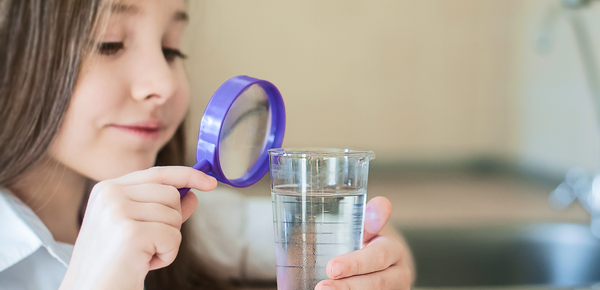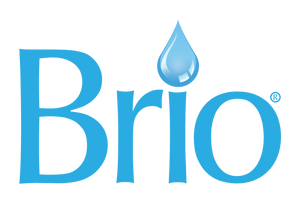In our quest for clean, safe drinking water, many of us turn to water filter pitchers as an easy, convenient solution. These pitchers, equipped with replaceable filters, can reduce impurities and enhance the quality of tap water. What’s more, they’re cheap, easy to use and can be stowed out of sight in your fridge. You can head to the store and pick one up today, fill it up, and be drinking filtered water by this evening.
But – and this is a BIG but – do water pitchers actually eliminate contaminants? You know, things like ‘forever chemicals’ or PFAS. These are the dangerous contaminants floating unseen around our water that can pose significant health risks including liver damage, immune system disruption, developmental issues and hormonal disruptions (and that’s before we even think about the environmental impact).
Join us as we uncover the truth about water filter pitchers and their role in ensuring safe and clean drinking water to help you make informed decisions about water purification for a healthier lifestyle.
Understanding what’s in your tap water

Tap water can contain a variety of contaminants, including chlorine, sediment, heavy metals like lead, and emerging concerns like per- and polyfluoroalkyl substances (PFAS). Also known as ‘forever chemicals’, PFAS do not break down easily in the environment and can persist for a long time.
Potential harms associated with PFAS in water
1. Health effects
PFAS exposure has been linked to various adverse health effects, including liver damage, immune system disruption, thyroid disease, and certain cancers (for example, kidney and testicular cancer). These chemicals can accumulate in the body over time and may lead to serious health complications.
2. Developmental issues
Exposure to PFAS during pregnancy or early childhood can interfere with normal development and may impact fetal growth, birth weight, and immune system development.
3. Impacts on hormones
Some PFAS chemicals can disrupt hormone function in the body, potentially leading to reproductive problems, altered menstrual cycles, and other endocrine-related issues.
4. Environmental persistence
PFAS are highly resistant to degradation and can persist in soil, water, and air. This persistence contributes to widespread contamination of water sources and ecosystems.
5. Bioaccumulation
PFAS can bioaccumulate in wildlife and humans, meaning they accumulate in organisms faster than they are eliminated. This can lead to higher concentrations of PFAS in the food chain, posing risks to animals and humans that consume contaminated food or water.
6. Regulatory concerns
Due to the health risks associated with PFAS, regulatory agencies are increasingly focused on monitoring and limiting exposure to these chemicals in drinking water. However, more stringent regulations and widespread contamination continue to be challenges.
PFAS in drinking water underscores the importance of effective water treatment methods, such as advanced filtration technologies like reverse osmosis. Filtering your tap water in this way is a proactive step towards improving its taste, but ultimately ensures its safety and your health. Discover more about the Top Contaminants & Chemicals Found In US Tap Water.
Do water filter pitchers work?

If you’re asking, are there water filter pitchers that remove fluoride or water filter pitchers that remove PFAS, the answer is it depends on the water pitcher. Brita and Pur water filter pitchers, for example, primarily use activated carbon filters to reduce some contaminants and improve taste. Consumer Reports indicates that the public health standards organization NSF-certified ZeroWater Ready-Pour pitcher reduces lead, chlorine, perfluorooctane sulfonate (PFOS) and perfluorooctanoic acid (PFOA).
There are water pitchers, therefore, that can reduce serious contaminants, but by how much is not indicated.
With an advanced water filtration system like reverse osmosis (RO), you can rest assured knowing that it offers a far superior reduction of contaminants. Choosing reverse osmosis ensures not only better health outcomes but also a heightened sense of security and financial savings over time.
Why reverse osmosis is a better choice for health and peace of mind
1. Enhanced health protection
Even minimal amounts of certain contaminants, such as heavy metals like lead and arsenic, can accumulate in your body over time and pose serious health risks.
2. Comprehensive contaminant removal
While water filter pitchers can reduce common contaminants like chlorine and sediment to a point, they may fall short in comprehensively reducing all types of contaminants.
3. Long-term cost savings
Continually consuming water with limited or partial reduction of contaminants can result in higher health costs over time. Investing in systems that heavily reduce contaminants can be more cost-effective in the long run.
Which water filter pitcher removes the most contaminants?

When you’re choosing a water filtration method, it’s important to think about what’s in your water and what your household needs. Water filter pitchers are convenient and budget-friendly, but they might not cover all your purification needs, reducing rather than nearly moving all the contaminants in your water.
On the other hand, reverse osmosis filtration stands out for its ability to remove a much wider range of contaminants, such as:
- Totally dissolved solids
- Heavy metals (like lead, arsenic, mercury)
- Chemicals (such as pharmaceuticals, herbicides and pesticides)
- Bacteria and viruses
- Forever chemicals
Let's break it down: water filter pitchers are great for basic filtering, but they have limitations. Reverse osmosis uses a series of filters (normally 4+) with a greater surface area to more comprehensively filter out a broader array of contaminants. This makes it a more effective solution for serious peace of mind. Read Does Reverse Osmosis Remove Lead and PFAS? to discover more.
Reverse osmosis is the most effective water filtration method

So, if you’re looking for comprehensive purification, a reverse osmosis system could be the way to go. You’ll get:
- Improved taste and odor of water
- Removal of harmful contaminants for safer drinking water
- Reduction in dissolved solids that can impact water quality
- Enhanced purity and clarity of water
- Peace of mind knowing that water is clean and safe for consumption
Plus, Environmental Working Group (EWG), a public health advocacy organization that has called for more regulation of PFAS, says reverse osmosis is better at ‘consistently’ reducing PFAS. This is because RO systems include up to two carbon membranes as well as an RO membrane, whereas water filter pitchers generally just have a carbon filter.
Take control of your water quality

If you’re high-quality, great-value water solutions, Brio offers a range of bottled coolers and bottleless coolers, along with refrigerator filters, providing effective and reliable water purification for a healthier lifestyle. Experience the difference with Brio water filtration solutions and take control of your water quality today.




